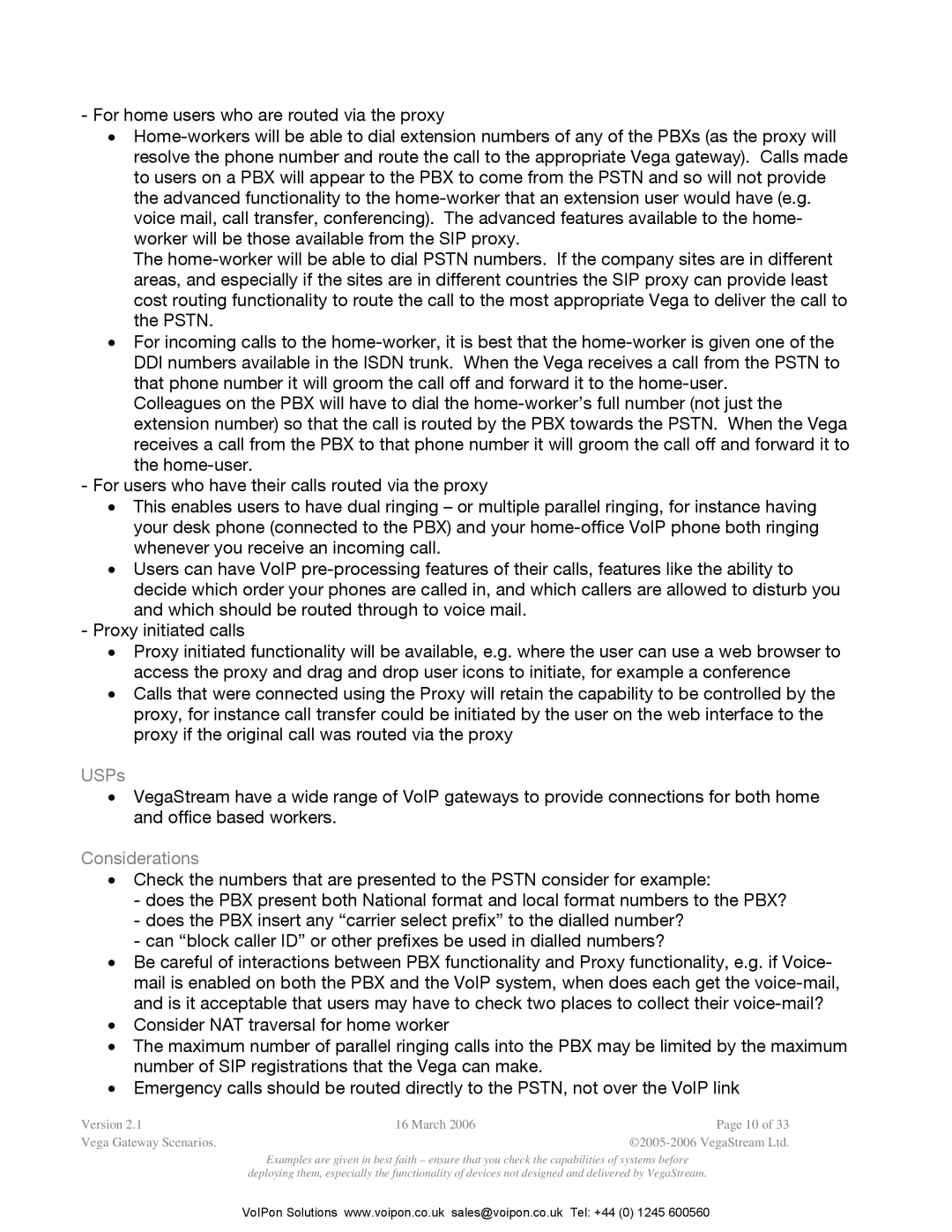Vega Gateway specifications
Polycom Vega Gateway serves as a crucial component in modern telecommunications, bridging the gap between traditional telephony systems and Voice over IP (VoIP) networks. As organizations transition to digital communication solutions, the Vega Gateway plays a vital role in ensuring compatibility and enhancing connectivity.One of the primary features of the Polycom Vega Gateway is its ability to facilitate seamless interoperability between different communication protocols. It supports a range of signaling protocols, including SIP (Session Initiation Protocol), H.323, and analog interfaces, making it easy to connect legacy phone systems to modern VoIP setups. This flexibility allows businesses to gradually upgrade their telecommunications infrastructure without the need for costly complete system overhauls.
The Vega Gateway is equipped with advanced transcoding capabilities, which enable the conversion of audio streams between various formats. This is especially beneficial in multi-vendor environments where different systems may use incompatible codecs. Its ability to transcode ensures high-quality voice communication regardless of the underlying technology, thus maintaining clarity and reducing latency.
In terms of deployment, the Polycom Vega Gateway can be implemented as both a hardware appliance and a virtualized solution, providing businesses with deployment flexibility based on their IT environment. This adaptability is crucial for organizations looking to optimize their resources and scale their telephony solutions as needed.
Security is another key characteristic of the Vega Gateway. It incorporates robust encryption protocols, such as SRTP (Secure Real-time Transport Protocol), to safeguard voice communications against potential threats. Additionally, the gateway features firewall traversal capabilities, making it suitable for deployment in various network environments without compromising on security.
The gateway is also designed with ease of management in mind. Administrators can configure and monitor the device through a web-based interface or command line, ensuring that managing the system remains straightforward even for complex setups. Logging and reporting functionalities further enhance administrative oversight, allowing organizations to analyze their VoIP usage and optimize resource allocation.
Overall, the Polycom Vega Gateway is a comprehensive solution that addresses the complexities of integrating modern VoIP technology with legacy systems. With its robust feature set, diverse technological support, and commitment to security and manageability, the Vega Gateway stands out as an essential tool for organizations looking to enhance their communication strategies in an ever-evolving digital landscape.
